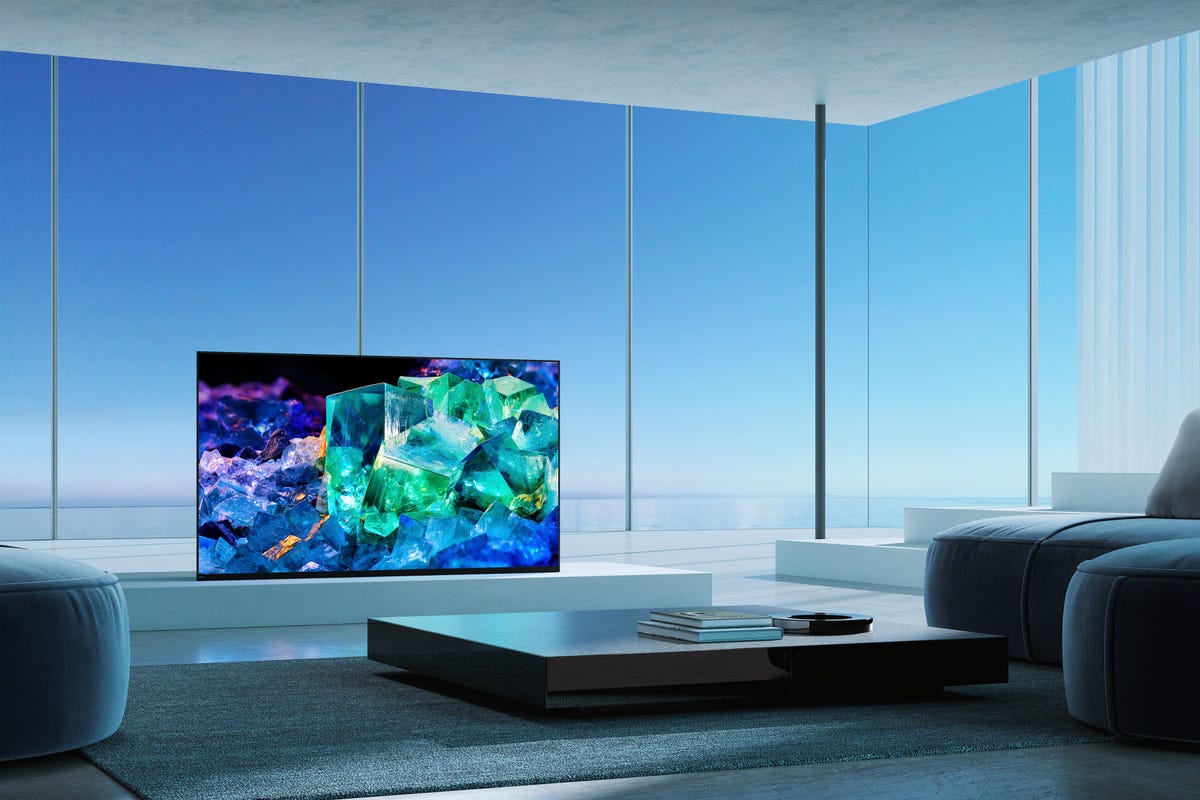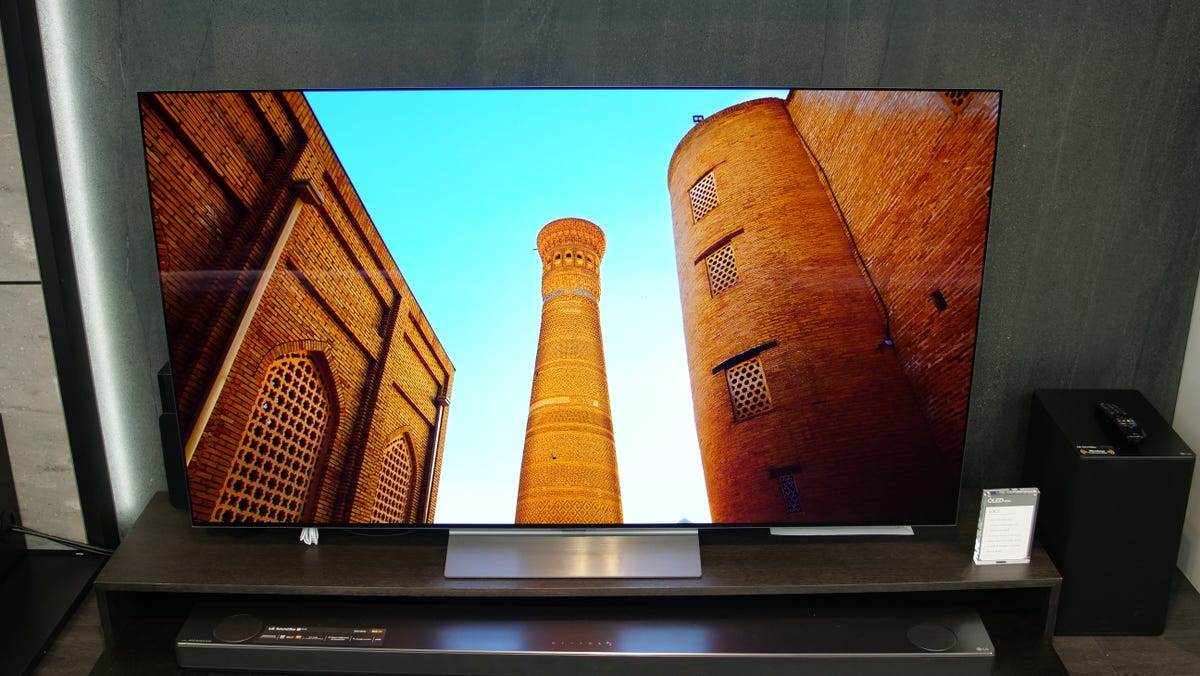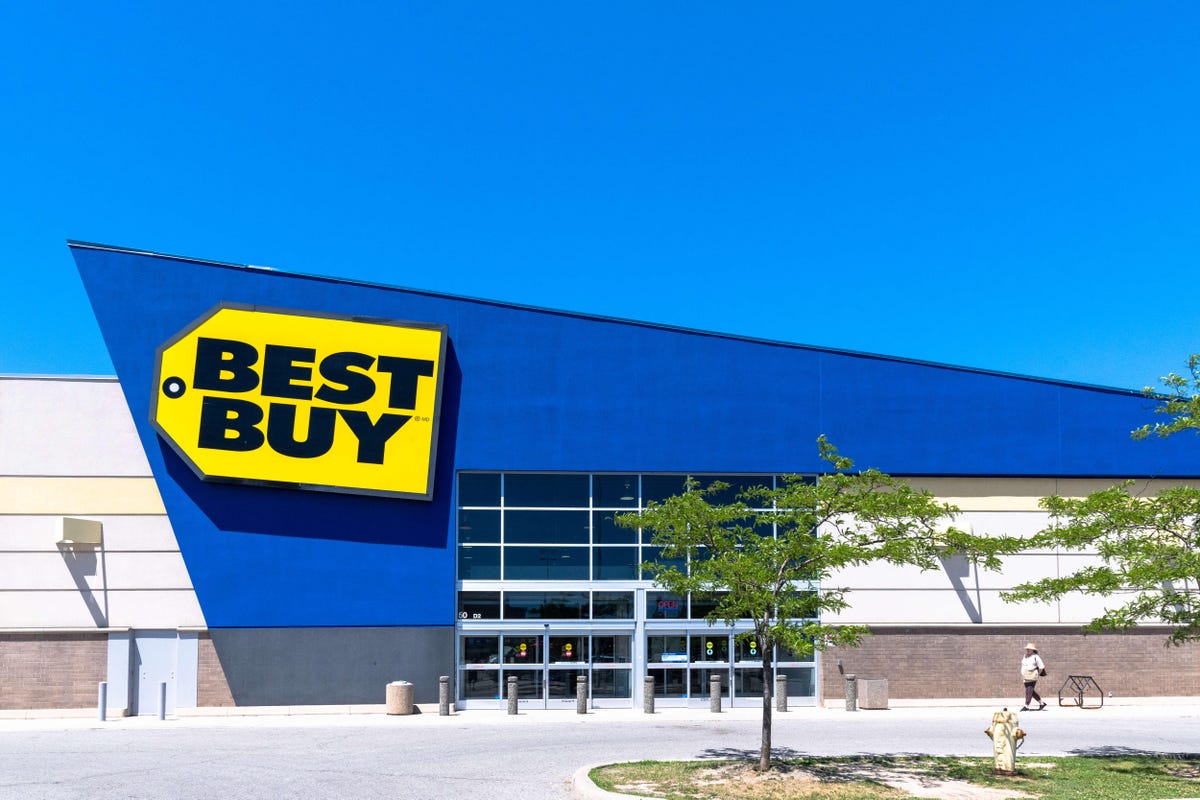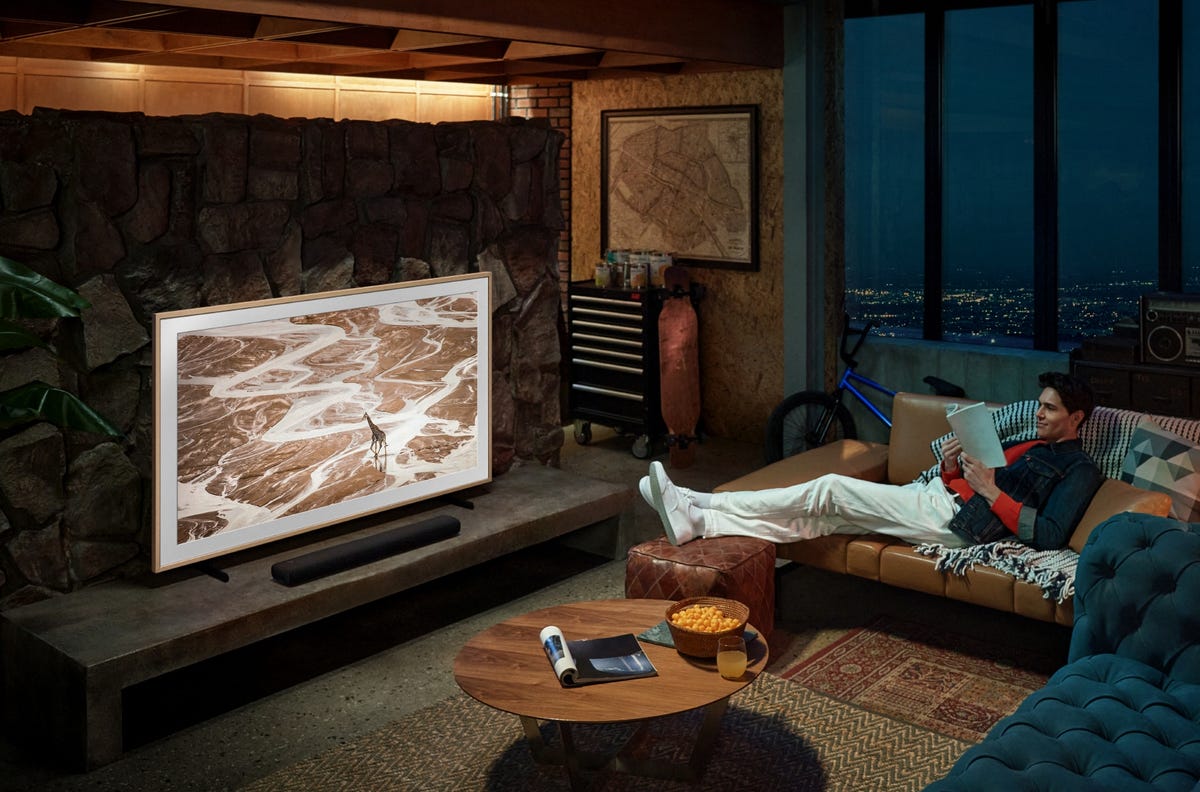Samsung s Tv Sales Continue to Slide
What's happening
New 2022 TV models are now available, but plenty of 2021 TVs are still out there.
Why it matters
2022 TVs might be newer, but they're also more expensive and have similar features to the 2021 models. You'll save money right now by grabbing a 2021 unit. Or wait until the fall when 2022 TVs will be on sale.
If you're looking to get a new TV without breaking the bank, opting for last year's model or waiting a few months until prices drop on 2022 models are your best bets to get all the features you want while still saving money. That's because TVs are a mature technology, which means that new, groundbreaking features don't come out every single year. Changes are incremental, with new models adding only minor updates year-over-year. For example, a 2021 TV at a given size or price will generally have similar picture quality and features to its 2022 counterpart. There are still deals on 2021 TVs, which are significantlyless expensive than the current models.
When deciding which TV to buy and when, everyone should know about the annual television pricing cycle. It starts atCES, the huge tech show that happens every January, when new TVs (plus other tech like laptops and car technology) are announced each year. Later in the spring and summer -- basically now -- many of the new models are already on the shelves. But those new sets are at their highest prices of the year. During the fall,manufacturers start slashing prices to make way for next year's crop of new TVs.
If you want thelatest and greatest technology you're probably already set on a 2022 model and you'll certainly be able to save money on those in the fall. But if you're looking to get a new TV right now, scooping up a deal on a 2021 set is going to be the most affordable option. Just know that you'll probably have to jump on a bargain when you see them, as eventually manufacturers will sell out of their 2021 models.
Read more: LG C1 vs. LG C2: Which OLED TV Should You Buy?

Sony and Samsung TVs with QD-OLED, a new technology promising better picture quality, are expensive and only available in 55- and 65-inch sizes.
SonyIf I buy a 2021 model now, what new features am I missing?
To put it succinctly, not too much. There's always something new around the corner, but changes from year-to-year are usually incremental. If you worry about missing out on the latest and greatest tech, it should give you peace of mind that even if something really new hits the market, it's going to be very expensive.
New QD-OLED TVs from Samsung and Sony are a good example. They combine OLED displays with quantum dot technology, and claim higher brightness and better color compared to current OLED TVs. One of these new sets might sound enticing, but QD-OLEDs come with a premium price tag, so they might be tough to recommend over more-affordable OLEDs like the LG C2.
Read more: QD-OLED: Everything We Know About the Newest TV Tech From Samsung and Sony
In 2022, traditional OLED TVs are arriving in untraditional sizes. This year, LG introduced the42-inch C2 Series TV, the smallest OLED on the market, while also laying claim to the largest OLED available with the97-inch G2 TV.

New for 2022, LG's OLED C2 now comes in 42- and 97-inch sizes.
Richard Peterson/CNETMini-LED TVs are also on the rise and could deliver close-to-OLED picture quality, but the new models we know about so far will also be expensive. The SonyZ9K and X95K are the company's first models with mini-LED, and the TCL X925pro has a new kind of slimmer mini-LED backlight, but none of them will be cheap. Samsung, TCL and Vizio are expected to announce more TVs later this year, many of which will use mini-LED, but we doubt they'll offer huge improvements over the 2021 models.
Also rolling out across the country is NextGen TV, aka ATSC 3.0. This is free over-the-air 4K TV, and it's moving forward quite quickly -- it might already be available in your city. In 2022 we'll see more TVswith built-in tuners that cost less than ever. Don't feel you need to rush to upgrade, or get those specific models however, since in the worst case you'll be able to buy a cheap external tuner and connect that to your TV.
Read more:Gaming Modes, Webcams and QD-OLED: Which 2022 TV Trends Stand Out?
There's also HDMI 2.1. While 2.1 has several new technologies that are great, it's not going to make any current TVs obsolete (unless it's a current 8K TV, but that's yet another story). As long as your current TV works with your current sources, you should be fine.
Really old TVs, older than 10 years, might have issues connecting to modern streaming and disc sources, but there's no real workaround for that. If your TV doesn't work with a new Roku or Blu-ray player, then you might need to upgrade if you want to use one of those.

Watch this: First look at LG OLED TVs for 2022: The best TVs get...
Do I need to upgrade?
Forget all the new tech. If your TV works and you're happy with it, keep it. Don't feel any pressure to upgrade.
Modern TVs are, on average, brighter and have better picture quality than the TVs from a few years ago. Unless you're the type of videophile who wants to tweak every setting and fixates on nits and color accuracy, however, you probably don't need a new TV.
The pressure to upgrade is pervasive in our tech culture, but TVs tend to last (and be perfectly functional) longer than most devices. They don't, for example, have batteries that lose capacity like mobile phones -- or have wires that wear out like headphones. A TV from five or even 10 years ago likely works fine, though it might not look as good as the current 4K HDR TVs. So again, if that's not a huge deal for you, you can likely keep what you have for a few more years.
Read more: Best TVs for PS5 and Xbox Series X, Series S
This is even true when considering new consoles, the PlayStation 5 and Xbox Series X. If you've got a PS4, Xbox One or any console connected via HDMI, the new consoles should work fine. They might look better on a new TV, but they'll still look great on yours.
If your TV is having issues, or you just want something larger, that's a different story. New TVs are much cheaper per inch than TVs of the past. You'll be able to replace your current TV with something the same size, looks better and is cheaper than your old TV. Or you can pay the same amount as your old TV and get something that's far bigger.
When is the best time to buy a TV?
TV sales are the biggest in the fall and culminate on Black Friday and Cyber Monday. There are always some incredibly cheap 4K TVs on offer, but that's not the whole story.
First of all, the TVs that get the huge discounts are usually either no-name brands, or low-end models from name brands. They're fine if you just want a cheap TV, but they're not going to offer the picture quality of an even slightly higher-end model. The best TVs go on sale as well, but deep discounts on those are less common.

TV sales happen all year, but Black Friday season sees the biggest discounts.
Roberto Machado Noa/Getty ImagesSecond, massive discounts on TVs are rare in general. It might be counterintuitive, but TVs typically don't have much mark-up. There isn't a lot of profit in a $500 TV. So unless the store is trying to clear out stock, you shouldn't expect a gigantic drop in price even during sales. Plenty of good discounts are available, they're just not going to be "50% off" or similar, unless there's a specific reason that model is getting such an extreme discount. Or it's a doorbuster in limited quantities.
Third, most big companies don't allow stores to offer their own pricing. This is called UPP, or unilateral pricing policy. It means that a TV from that company is going to cost the same, whether it's on Amazon, in Best Buy, or anywhere else. Well, anywhere else that wants to continue selling TVs from that company. If this sounds sketchy, it is, but that's a topic for a different article.

The Samsung Frame may look sophisticated, but your current TV might work just as well.
SamsungAll in all, is it worth upgrading my TV?
Here's the short version:
Get a new TV now if:
- Your current TV is having issues, or is too old to connect to a streaming service like Netflix.
- You're willing to buy from a place that has a price-match policy, in case there's a sale.
- You want something bigger than what you have now.
Don't get a TV now if:
- Your current TV works fine.
- There's literally anything else you need or want to spend money on.
If you've got the itch for something new, but you're still on the fence, consider giving your TV a bit of a makeover. If you've never adjusted the settings, it's easy to do and will probably make your TV look better than it ever has. That might tide you over for a bit.
And if you finally decide that, yes, you're ready to buy a new TV now, we at CNET do have some guidelines and suggested models.
As well as covering TV and other display tech, Geoff Morrison does photo tours of cool museums and locations around the world, including nuclear submarines, massive aircraft carriers, medieval castles, airplane graveyards and more.
You can follow his exploits on Instagram and his travel video series on YouTube. He also wrote a bestselling sci-fi novel about city-size submarines, along with a sequel.
Source: https://www.cnet.com/tech/home-entertainment/tv-shopping-consider-buying-a-2021-tv-and-save-money/
0 Response to "Samsung s Tv Sales Continue to Slide"
ارسال یک نظر